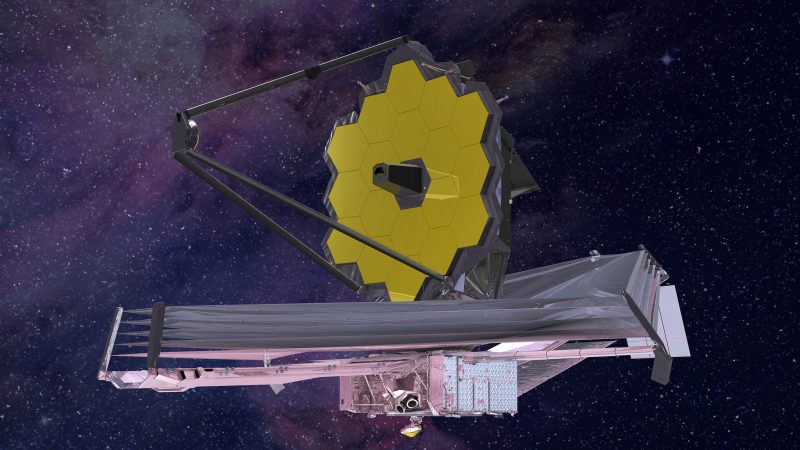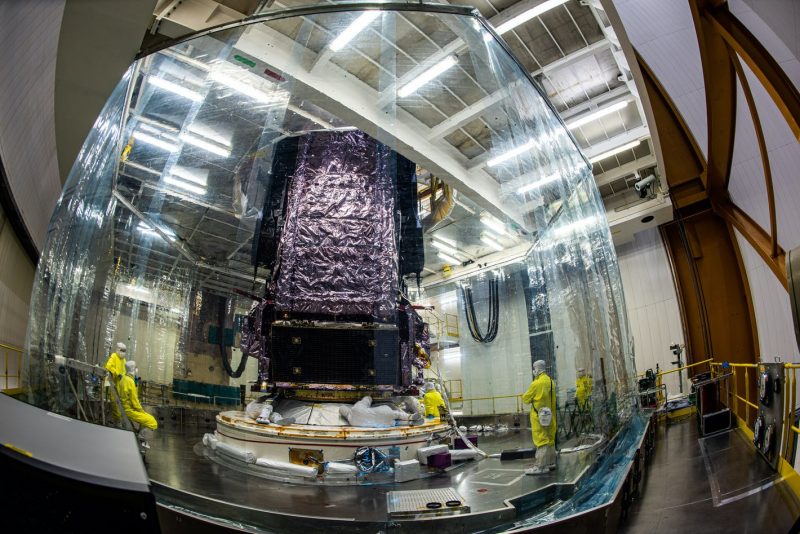
Webb in micrometeoroid strike
A micrometeoroid strike in late May 2022 scarred one of the primary mirror segments of the James Webb Space Telescope – Hubble’s successor – NASA said on Wednesday, June 8, 2022. Webb’s operators had expected micrometeroids to strike. But the power of this particular strike – the 5th recorded since the instrument launched – was greater than its operators had anticipated. NASA said its engineers will need to adjust the instrument to compensate for the unexpected early damage. Meanwhile, NASA reported in a blog post:
After initial assessments, the team found the telescope is still performing at a level that exceeds all mission requirements despite a marginally detectable effect in the data. Thorough analysis and measurements are ongoing.
Is there talk of replacing the mirror segment? No, and there likely won’t be. The damage doesn’t appear to be great enough for such a drastic step. And the telescope is orbiting far from Earth – a million miles (1.6 million km) from Earth – at the L-2 point in the Earth-sun system.
Micrometeoroid impacts expected
The title of NASA’s June 8 blog post, announcing the micrometeoroid strike, is Webb: Engineered to Endure Micrometeoroid Impacts. The post quoted Lee Feinberg, Webb optical telescope element manager at NASA Goddard, as saying:
With Webb’s mirrors exposed to space, we expected that occasional micrometeoroid impacts would gracefully degrade telescope performance over time. Since launch, we have had four smaller measurable micrometeoroid strikes that were consistent with expectations, and this one more recently that is larger than our degradation predictions assumed.
We will use this flight data to update our analysis of performance over time and also develop operational approaches to assure we maximize the imaging performance of Webb to the best extent possible for many years to come.
Webb’s operators believe the latest strike occurred between May 23 and May 25.
Designed to be tough
Engineers designed the Webb telescope to be tough. Indeed, it underwent complete testing to mimic the conditions it will experience beyond the orbit of Earth’s moon. NASA says Webb is built to take a lifetime of damage and remain operational. The blog post from NASA quoted Paul Geithner, technical deputy project manager at NASA’s Goddard Space Flight Center, as saying:
We always knew that Webb would have to weather the space environment, which includes harsh ultraviolet light and charged particles from the sun, cosmic rays from exotic sources in the galaxy, and occasional strikes by micrometeoroids within our solar system. We designed and built Webb with performance margin – optical, thermal, electrical, mechanical – to ensure it can perform its ambitious science mission even after many years in space.
Compensating for micrometeoroid strike
Since the engineers anticipated damage of this type to Webb, ground-based controllers are able to somewhat compensate. They can do that , for example, by repositioning the mirror segment. NASA said:
Engineers have already performed a first such adjustment for the recently affected segment C3, and additional planned mirror adjustments will continue to fine tune this correction. These steps will be repeated when needed in response to future events as part of the monitoring and maintenance of the telescope throughout the mission.
1st Webb science results to be released July 12
The current period is a stressful one for those operating the Webb. Currently, the instrument is undergoing a six months of preparation before its primary data gathering can begin. The first full-color images from the telescope will be released on July 12, 2022.
Significantly, that date should mark the start of a new era of understanding of the universe surrounding us. Eric Smith, Webb program scientist at NASA Headquarters in Washington, said:
As we near the end of preparing the observatory for science, we are on the precipice of an incredibly exciting period of discovery about our universe. The release of Webb’s first full-color images will offer a unique moment for us all to stop and marvel at a view humanity has never seen before.
These images will be the culmination of decades of dedication, talent, and dreams – but they will also be just the beginning.

Bottom line: A micrometeoroid strike slightly damaged one of the segments of the Webb telescope’s primary mirror. Thankfully, the instrument is still performing beyond mission parameters. Its first full-color images will be released July 12, 2022.











